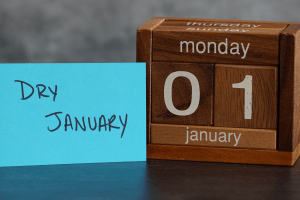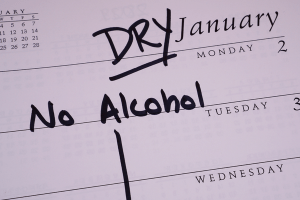
National Institute on Alcohol Abuse and Alcoholism (NIAAA)
Rethinking Our Drinking Habits

Events such as Dry January and Sober October, as well as the broader sober curious movement, are rapidly gaining popularity, especially among Millennials. These trends are part of a broader movement towards health and wellness and emphasize taking a break from alcohol to understand how it is impacting your life. For example, do you sleep better, or do you have more energy in the mornings when you haven’t been drinking? If so, perhaps such changes are your body telling you that it’s time to take stock of your drinking habits.
Excessive alcohol use (including binge drinking and heavy drinking) poses risk for immediate consequences including injuries, motor vehicle crashes, violence, unsafe sexual behavior, blackouts, and overdoses as well as chronic health conditions such as liver disease, heart disease, depression, and certain cancers. It can also lead to alcohol use disorder (AUD), a serious chronic condition that affects nearly 15 million people in the United States. It’s important to recognize that lower levels of consumption also pose health risks. For example, did you know that even one drink a day increases a woman’s risk of breast cancer and the level of risk increases with each additional drink?
How much, how quickly, and how often you drink influences your risk of adverse health consequences. This makes it important to pay attention to how much alcohol you’re consuming and stay within the 2015-2020 Dietary Guidelines for Americans which recommend that if a person chooses to drink alcohol, they should consume it in moderation. This is defined as up to 1 drink per day for women of legal drinking age and up to 2 drinks per day for men of legal drinking age. The Dietary Guidelines defines a standard drink (or alcoholic drink-equivalent) as any beverage containing 0.6 fluid ounces or 14 grams of pure alcohol. This is equal to 12 fluid ounces of beer (5 percent alcohol), 5 fluid ounces of wine (12 percent alcohol), or 1.5 fluid ounces of 80 proof distilled spirits (40 percent alcohol). However, be aware that beer, wine, and mixed beverages can vary in alcohol content.
In addition, some people should avoid alcohol completely. This includes individuals who take certain over-the-counter or prescription medications, have certain medical conditions, are underage, are pregnant or trying to become pregnant, are planning to drive or participate in other activities that require skill, coordination, or alertness, or are recovering from AUD or unable to control the amount of alcohol that they drink. People who have consumed alcohol heavily over time and want to reduce or stop drinking should seek medical help to monitor for and to prevent against potentially painful or even deadly withdrawal symptoms.
It’s a good idea every now and then to step back and reflect on your relationship with alcohol. For some individuals, the beginning of the year or “sober months” may serve as an ideal time to assess their habits and decide whether change is needed. For those who are interested in rethinking their drinking habits, visit Rethinking Drinking, NIAAA’s website that helps readers explore their drinking patterns and—for those who wish to cut down or quit—offers tips, tools, and resources. If you think you have a problem with alcohol and need help, see the NIAAA Alcohol Treatment Navigator to learn about quality care and treatment options near you.
Best wishes, GFK
Need Help for an Alcohol Problem?
If you’re having an emergency, call 911. If you are having suicidal thoughts, call 911, go to the nearest emergency room or call the toll-free, 24-hour National Suicide Prevention Lifeline at 1-800-273-TALK (8255) to help you through this difficult time.
The NIAAA Alcohol Treatment Navigator can help you recognize and find high quality treatment for alcohol use disorder. If you drink excessively, seek medical help to plan a safe recovery as sudden abstinence can be life threatening. NIAAA’s Rethinking Drinking can help you assess your drinking habits and provides information to help you cut back or stop drinking.







